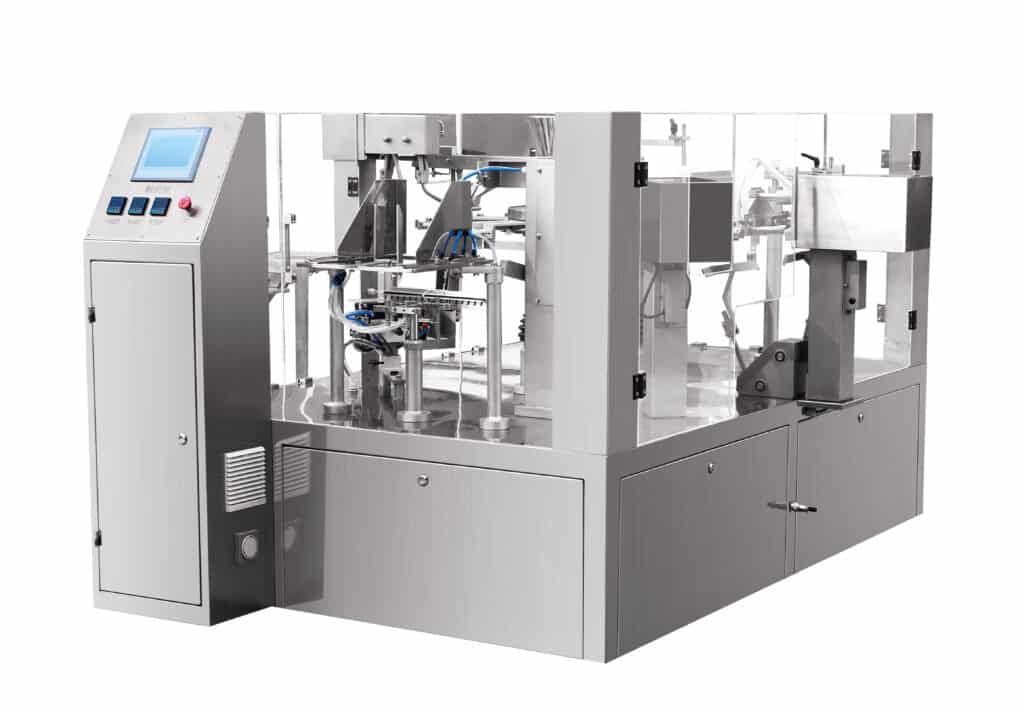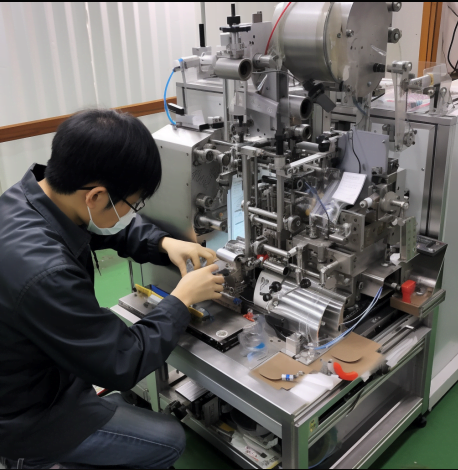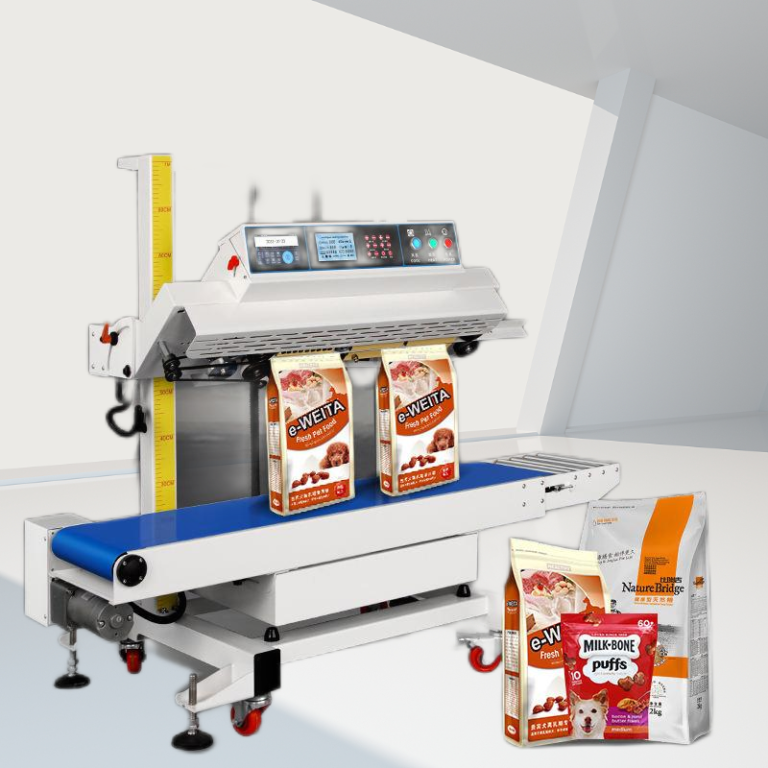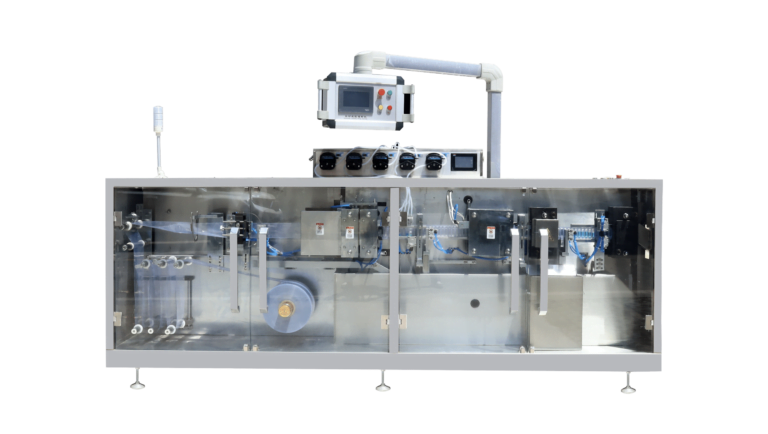
As a packaging machine engineer for 20 years, we’re talking about the automated rice packing machine today.
Packaging plays a vital role in maintaining the quality and freshness of rice. Proper packaging preserves rice by limiting moisture loss, exposure to oxygen, and contamination from microbes and pests. It also impacts consumer satisfaction and a brand’s reputation. Consumers judge a rice brand largely based on the impression created by its packaging.

Type Of Rice Packaging Machinery
Different types of machinery are used for rice packaging, including bagging machines, flow wrappers, form-fill-seal machines, and weighing scales. Bagging machines fill premade bags with rice and seal them. Flow wrappers continuously wrap rice in film. Form-fill-seal machines form, fill and seal pillow pouches or stand-up bags. Weighing scales accurately measure the amount of rice before packaging.

Common packaging formats for rice include multi-layer laminated paper/plastic bags, pouches, and pouches with one-way valves for moisture release. Fully automatic rice packaging machinery improves efficiency, throughput and reduces labour costs compared to manual packaging.
Factors Affecting Rice Packaging
Environmental conditions like temperature, humidity and atmospheric moisture greatly impact rice quality during storage and transportation. Packaging materials must be selected based on their ability to provide adequate barriers against moisture, oxygen and contaminants. Proper material selection and package design minimize damage and deterioration during handling and transport.
Rice Packaging Process
Rice packaging machinery works as follows:
- Raw rice is fed into a hopper or loading area at the start of the packaging line.
- Before packaging, the rice may go through preprocessing stages like cleaning, sorting, grading and drying to ensure the rice is free of debris, stones and other impurities, and that the grains are uniform in size.
- The rice then enters the packaging machinery, which consists of the following key components:
- Weighing scale: The rice first passes through a weighing scale to accurately measure the required amount for each package. Checkweighers ensure the weight is within specified limits.
- Filling system: The measured rice is then fed into a filling system that transports and deposits the rice into bags, pouches or trays. Vacuum or pneumatic systems are typically used for gentle transport and minimal breakage.
- Sealing unit: After filling, the open package enters the sealing unit which applies heat or adhesive to seal the package. Different types of sealers are used for different package formats.
• Inspection systems: Advanced packaging lines integrate inspection systems like metal detectors, check weighers and vision systems to detect contaminants, verify weights and inspect seal integrity.
- Labelling: Finally, labellers apply product information, barcodes and branding to the packaged rice.
- The filled and sealed packages then move along the line to be packaged into shipping cases and conveyed to storage.
Advanced Technologies in Rice Packaging Machinery

State-of-the-art rice packaging machines feature advanced digital controls, high-speed operations, and integrated automation. Robotics is being used to load and unload packages, reduce changeover times and increase flexibility. Quality control systems like check weighers and metal detectors monitor package weights and detect defects and contaminants. Vision systems and X-ray imaging improve inspection accuracy.
Common Challenges in Rice Packaging
- Jamming and clogging – Rice grains can get stuck in hoppers, chutes, scales and filling heads, disrupting operations. Solutions include regularly cleaning machinery, adding lubricants, and using vibratory feeders and declumping systems.
- Material wastage – Excess rice left in packaging machinery after changeovers and improper settings can lead to material wastage. Optimizing settings, minimizing changeover times and incorporating residual product collection systems can help reduce waste.
- Package leaks and tears – Improperly adjusted or worn out sealing units can cause package leaks and tears, leading to product spoilage. Regular maintenance and calibration of seals, along with replacing worn parts can minimize these issues.
- Contamination – Foreign objects and microbial contamination of packaged rice can occur due to machinery wear, improper sanitation and product carryover between changeovers. Proper sanitation, installation of food-grade parts and regular changeover procedures help reduce contamination risks.
- Inconsistent package weights – Worn or improperly calibrated weighing scales can result in underfilled or overfilled packages. Regular calibration, maintenance and change of weigh belts and sensors ensures accurate weights.
- Breakage and damage – Mechanical impact or improper adjustment of packaging line speeds can cause rice grains to break during packaging and handling. Optimizing machine settings and using vibration dampers, flexible chutes and gentle transfer systems can reduce grain breakage.
- High downtime – Downtime due to maintenance, jamming, material and part shortages can significantly impact production efficiency. Proper preventative maintenance procedures, ensuring spare parts availability and integrating automated clearing mechanisms can minimize downtime.
Ensuring Food Safety and Compliance

Rice packaging facilities must comply with stringent regulations and standards set by the FDA, EPA and industry bodies. Proper sanitation procedures and employee hygiene practices are vital to ensure packaged rice is free from microbial contamination. Traceability systems allow producers to identify the source of any contaminated rice and initiate recalls quickly.
Optimizing Packaging Efficiency and Sustainability
Rice producers can optimize packaging operations through automation, line consolidation and material reduction. More sustainable packaging options include bioplastics, recyclable paper bags and materials made from renewable resources. However, sustainable packaging often has lower barrier properties requiring trade-offs between maximizing shelf life and reducing environmental impact.
Frequently Asked Questions
Q. How should I choose the right packaging machinery?
A. Consider rice type, volume, budget and required package format. Choose machines that optimize output , minimize changeover times and feature food-grade materials.
Q. What factors determine package design?
A. Factors include barrier properties, product weight, stacking strength, consumer preference, market trends and branding requirements. Properly designed packages maximize barrier properties while meeting appearance and branding needs.
Conclusion
With every twist and turn, we’ve explored the emotional journey that rice packing machines bring to the table. From liberating you from the burden of manual labor to igniting your creativity and environmental consciousness, these machines have the power to transform your rice packaging process. Embrace the emotions of excitement, pride, and relief as you embark on this thrilling adventure toward efficiency, precision, and sustainability. Let the emotional tide carry you towards a future where perfectly packaged rice is no longer a dream but a beautiful reality.
Lintyco is a pioneer and leader in automated Rice Packing Equipments and end-to-end packaging systems. Lintyco’s innovative packaging solutions for food, pharma, and other applications are complemented by advanced solutions for secondary packaging, wrapping & cartoning, bulk packaging, and more. Whether you are looking for a new machine or a complete line, or if you just want to upgrade your current packaging machine, talk to Lintyco. As experts of the industry with over three decades of proven expertise, Lintyco will provide the optimal solution backed by excellent consultancy and support.





